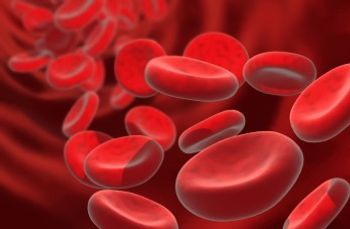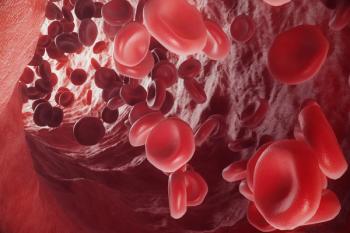
Promising Efficacy Data for Heavily Pretreated CLL/SLL Indicate Potential Benefit for Liso-cel Combination With Ibrutinib
Findings from a phase 1/2 trial indicate that lisocabtagene maraleucel plus ibrutinib may represent a viable treatment option for patients with heavily pretreated chronic lymphocytic leukemia or small lymphocytic lymphoma and high-risk disease features.
Data from the phase 1/2 TRANSCEND-CLL-004 study (NCT03331198) established feasibility for the combination of the investigational CD-19–directed chimeric antigen receptor (CAR) T-cell product lisocabtagene maraleucel (liso-cel) with ibrutinib (Imbruvica) for patients with relapsed or refractory chronic lymphocytic leukemia or small lymphocytic lymphoma (CLL/SLL).
The phase 1, dose-escalation portion of the trial examining the CAR T-cell product plus a BTK inhibitor in patients with relapsed/refractory disease were presented at the American Society of Hematology Annual (ASH) Meeting & Exposition and showed that the combination was well tolerated and achieved high rates of response and undetectable minimal residual disease (MRD).
“Despite highly active targeted therapy, most patients with high-risk CLL will eventually relapse or progress on treatment and many develop refractory disease,” William G. Wierda, MD, PhD, executive medical director of The University of Texas MD Anderson Cancer Center, said in a presentation of the data. “Notably responses [to ibrutinib and liso-cel therapy] were seen among these heavily pretreated patients. Liso-cel expansion and function were seen in vivo in the presence of concurrent ibrutinib therapy.”
Liso-cel—a CD-19–targeting, defined composition, 4-1BB CAR T-cell product administered at equal doses of CD8+ and CD4+ CAR-positive T cells—was examined at 2 dose levels of 50 or 100 × 106 CAR T-cells with or without ibrutinib at 420 mg daily. Eligible patients had progressed on prior ibrutinib therapy at enrollment, high-risk features and received ibrutinib for 6 months or more with less than a complete remission (CR), BTK or PLCg2 mutations, or prior ibrutinib with no contraindications to reinitiating therapy.
Patients in the current analysis (n = 19) were either restarted or continued on ibrutinib therapy at initiation, then underwent leukapheresis for T-cell collection and production. Bridging therapy was allowed. Lymphodepletion with fludarabine 30 mg/m2 and cyclophosphamide 30 mg/m2 was followed by liso-cel administration. Patients remained on daily ibrutinib at least 90 days after receiving liso-cel and could be continued beyond the 90 days per investigator preference. The primary end point of the phase 1 combination therapy arm was safety and laboratory abnormalities with exploratory objectives of antitumor activity.
Among all treated patients, 12 (63%) had a CR or CR with incomplete blood count recovery (CRi) and 6 had a partial response (PR), resulting in an overall response rate (ORR) of 95% (95% CI, 74.0%-99.9%). For those treated at the lower liso-cel dose (n = 4), those rates were 50% and 25%, respectively, with an ORR of 75% (95% CI, 19.4%-99.9%). With the highest dose level of liso-cel (n = 15), the ORR was 100% (95% CI, 78.2%-100.0%), with a 67% CR/Cri rate and a 33% PR rate.
Among all patients, 89% had undetectable MRD (≤10-4 at 10-month follow-up) in the blood and 79% on the bone marrow. In the lower-dose group, undetectable MRD occurred at a rate of 75% in both the blood and marrow. For the higher-dose group, rates of undetectable MRD were 93% and 80%, respectively.
“There was a high undetectable MRD concordance between blood and bone marrow,” Wierda said. “Complete remission and undetectable MRD rates were high, demonstrating therapeutic activity for this combination.”
Most patients remained in remission at follow-up and most responses occurred by day 30. Liso-cel peak expansion occurred by day 11 and long-term persistence was noted in 38% of patients at 6 months and 20% at 12 months.
Grade 3/4 treatment-emergent adverse events (AEs) occurred in 95% of patients, with neutropenia/decreased neutrophil count (89%), anemia (47%), and febrile neutropenia (26%) occurring most frequently. Notably, cytokine release syndrome was observed in three-quarters of patients (74%), but only 1 experienced a grade 3 event and none had grade 4 complications. Neurological events were observed in 32%, with 16% being grade 3 and none at grade 4. Managements of CRS and neurological events included tocilizumab alone (11%), corticosteroids alone (16%), or a combination of both therapies (16%).
Baseline characteristics revealed that patients were mostly men (63%) with a median age of 61 years (range, 50-77). About a third (32%) had bulky disease, defined as at least 1 lesion measuring 5 cm or more, and most had high risk features including deletion 17 p (42%), a TP53 mutation (32%), and/or a complex karyotype (42%).
“Research continues with this combination at dose level 2 [100 × 106 CAR-positive T-cells] in a cohort expansion,” Weirda concluded.
Reference:
Wierda WG, Dorritie KA, Munoz J, et al. Transcend CLL 004: phase 1 cohort of lisocabtagene maraleucel (liso-cel) in combination with ibrutinib for patients with relapsed/refractory (R/R) chronic lymphocytic leukemia/small lymphocytic lymphoma (CLL/SLL). Blood. 2020;136(suppl 1):39-40. Abstract 644. doi:10.1182/blood-2020-14062.
Newsletter
Stay up to date on recent advances in the multidisciplinary approach to cancer.

















































































